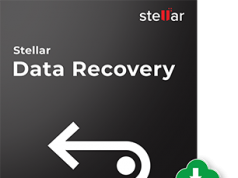The universal semantic layer is a critical component of modern data stacks. Acting as a connection between raw datasets and business users, it offers a simplified and unified view of complex data. Ultimately, its purpose is to provide the foundation for self-service analytics while empowering users to query and analyze data without requiring deep technical knowledge.
Adopting a semantic layer can significantly enhance the accessibility of data, elevate decision-making capabilities, and boost operational efficiency. As per Gartner’s projections, around 80% of organizations are expected to incorporate automation into their business analytics infrastructure as it adds immense value to analytical systems.
Moreover, IDC projects that the global data sphere will reach a staggering 175 zettabytes by 2025 at a CAGR of 61%. As a result, an effective semantic layer architecture has become crucial for managing diverse and complex data sources with maximum scalability, flexibility, and performance.
Organizations that want to maximize their data assets and achieve successful digital transformation must carefully devise a semantic layer strategy. This article will examine those strategies and significant factors to consider while implementing a semantic layer solution.
The Benefits of a Semantic Layer for Modern Enterprises
To achieve complete digital transformation, organizations are exploring innovative solutions such as the semantic layer. The advantages of implementing a semantic layer architecture in a modern data stack cannot be overstated. Here are just a few key benefits:
- Performance and Scale: By optimizing data access and retrieval, a universal semantic layer enables faster query execution and scalability for handling growing data workloads.
- Security and Governance: Centralized data access with role-based permissions ensure data integrity, privacy, and compliance with regulatory requirements.
- Single Source of Truth: This layer provides a consistent view of data across the organization, eliminating data silos and facilitating informed decision-making.
- Streamlined Analytics Stack: With the abstraction of complexities comes functional business users with self-service analytics capabilities, promoting collaboration amongst teammates while accelerating time-to-insight.
Strategies for Successful Semantic Layer Architecture Implementation:
To implement a universal semantic layer, careful planning and consideration are required, with a focus on these key strategies:
Scalable Data Processing:
Scalable data processing techniques are essential when handling increasing data workloads in the semantic layer. By utilizing distributed processing frameworks and cloud-native architectures, large volumes of data can be processed and analyzed in parallel for optimal performance. Auto-scaling and resource allocation optimization enhance computing resources by dynamically adjusting them based on changing workload demands. Such an approach ensures that future growth is accommodated without sacrificing top-tier performance.
Advanced-Data Modeling Techniques:
To effectively manage and analyze complex data, incorporate advanced modeling techniques such as multi-dimensional modeling, attribute hierarchies, and calculated measures. By creating a comprehensive semantic model using these methods, users can easily navigate through detailed data and gain insights efficiently. For greater flexibility to changing business needs, consider incorporating hybrid models.
Intelligent Data Aggregation:
To enhance the speed of data queries on massive datasets, it’s essential to implement intelligent strategies within the semantic layer. An effective way to accomplish this is by pre-processing information at various points of detail using techniques like dynamic aggregation, incremental aggregation, or intelligent caching. By utilizing these methods for smart pre-processing in a semantic layer architecture, organizations can manage complex data workloads and rapidly provide insights to users.
Integration with Cloud and On-Premise Data Sources:
To ensure the semantic layer can keep pace with the latest data changes, seamless connectivity with various data sources such as on-premise data lakes and cloud platforms is crucial. This allows to future-proof the system by deploying connectors and mechanisms that support real-time or batch data integration from highly scalable storage platforms and warehouses. Such adaptability accommodates diverse workloads while adjusting efficiently to changing data architectures over time.
Performance Optimization and Tuning:
Regularly analyzing query patterns to identify optimization opportunities, fine-tuning query execution plans, indexing strategies, and caching mechanisms can significantly improve query performance. Resource allocation and workload management techniques can also help prioritize critical queries. By proactively optimizing the system’s performance in this way, users enjoy a smooth and responsive analytics experience while keeping up with growing data workloads.
Conclusion
To effectively handle future data workloads, it’s crucial to create a semantic layer that incorporates scalable architecture, advanced data modeling techniques, intelligent data aggregation, seamless integration with diverse data sources, and ongoing performance optimization. These strategies ensure adaptability and efficiency within the semantic layer and provide valuable insights to users and remain at the forefront of this dynamic field.
Follow Technoroll for more!





